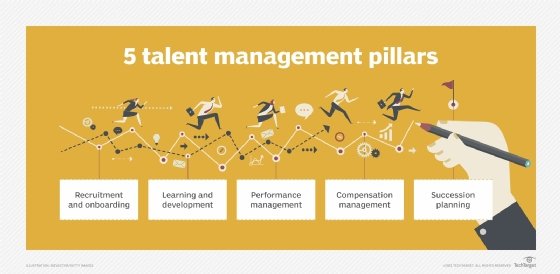workforce management (WFM)
What is workforce management (WFM)?
Workforce management (WFM) is an integrated set of processes that a company uses to optimize the productivity of its employees. WFM involves effectively forecasting labor requirements and creating and managing staff schedules to accomplish a particular task on a day-to-day and hour-to-hour basis.
Importance of workforce management
WFM systems enable organizations to gain insights into such business metrics as the exact number of employees needed to complete a particular job at a given time of the day, week or month. It also helps track employees' daily performance.
For example, in a contact center, WFM helps maximize the use of agent labor by forecasting the volume of transactions -- calls, messages or emails -- and scheduling the correct number of agents with the proper skills at the right time to handle the expected volume of transactions.
Workforce management processes
A comprehensive workforce management system encompasses a range of activities within the broader framework of human resource management, such as the following:
- Forecasting and budgeting. Forecasting is knowing how many and the type of staff resources are needed for a particular project during a certain time of the year, such as increased seasonal or holiday demand. Budgeting is knowing how much staff a company can afford to have on hand. WFM allows companies to use calculated forecasts to optimize staff deployment and balance workload as labor demands change.
- Staff scheduling. Scheduling is a significant aspect of WFM, as it allows companies to automate staffing based on all business variables, such as vacations, availability, workload and absences. In the past, staff scheduling was done manually. Without a solid WFM system, this was time-consuming, inefficient and often left companies understaffed in times of critical need.
- Time and attendance. Tracking time and attendance using WFM tools and processes reveals attendance patterns and helps companies better predict changes in demand and manage planned and unplanned staff absences and/or leaves. By analyzing WFM data, companies can pinpoint potential gaps in coverage, improve payroll accuracy and address chronic absentee and tardiness issues.
- Employee performance management. WFM gives businesses a better understanding of employee engagement levels so they can better focus on what drives employee productivity. Understanding how individual staff members work helps employers to reward employees who exceed expectations in a manner that aligns with what they value most.
- Compliance. Compliance tracking is one of the most complicated and potentially costly areas of WFM. Non-compliance with state, federal and local employment laws can result in fines and employee lawsuits. Compliance issues also include the tracking of required certifications and training for specific roles, missed breaks, labor standards, family/sick leave requirements and union agreements.
- Payroll and benefits administration. The availability of audit-ready custom reports makes payroll processes and queries quicker and easier. Workforce management also allows for instant payment options, such as end of shift payments and syncing of timesheets to payroll.
- Vacation and leave planning. WFM tools and processes allow companies to track staffing levels and digitally handle time-off requests and approvals. Through the use of automation and data analysis, companies can use WFM for management and tracking of leave balances, paid time off (PTO), absences, time-off calendars, schedule conflicts and banked time.
Benefits of workforce management
The potential benefits of using a WFM system include improved employee productivity, better labor planning, lower operational cost, efficient time and attendance tracking and better customer service.
Owing to these benefits, organizations in sectors that involve highly time-sensitive tasks and that pay employees on an hourly basis are increasingly using workforce management software to augment their overall business productivity. Such sectors include retail, insurance, banking, healthcare, distribution and transportation.

Additional WFM benefits
Other WFM benefits include the following:
- Improved payroll efficiency as time-consuming, often complex processes and tasks are automated.
- Employers are given better insight into worker engagement, attendance and productivity, which allows them to adjust training, coaching and processes for maximum performance.
- Reduction and optimization of the cost of labor.
- Automation, instant accessibility and simple reporting for workforce-related data to improve HR productivity and reduce administrative costs.
- Increased employee productivity with reduced absences and late arrivals.
- Lower non-compliance risks under local, state and federal labor laws.
- Increased operational agility so that as production schedules and market demands change, companies can easily allocate people with the right skills at the right time.
- Improved employee morale due to better transparency and well-informed manager and employee communications.
Workforce management software
Typically, companies use WFM software -- a mobile or desktop program that helps with staff scheduling -- either as part of an integrated HR management suite or as a stand-alone program.
Workforce management software is often integrated with third-party HR applications and with core HR systems that serve as central repositories for workforce data. WFM software also offers self-service options that enable employees to request days off or to check paid time off balances without having to ask the HR department, resulting in reduced paperwork and enabling HR employees to focus on strategic activities.
It is important to note that WFM is not a new concept. Workforce management processes have been automated by organizations for decades to deliver improved outcomes, with time and attendance tracking being one of the first processes to be automated. However, the concept has evolved significantly over the years, and it is now used in tech-savvy organizations and HR departments to monitor and improve labor effectiveness and efficiency.
The proliferation of cloud computing and the rapid expansion of Workforce analytics led to significant growth in the adoption of workforce management software and in the workforce management market. According to a study published by Emergen Research, the global workforce management market is estimated to reach more than $18 billion in 2032, with IBM, Kronos, Oracle, ADP, SAP, Workday, Infor and ClickSoftware being prominent competitors in the market.







